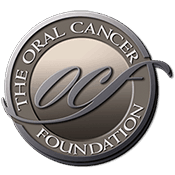New Therapies and Prognostic Techniques Highlighted in Head and Neck Cancer
The Asco Post D. Neil Hayes, MD, MPH, of the University of North Carolina at Chapel Hill, described efforts to position the epidermal growth factor receptor (EGFR) inhibitor cetuximab (Erbitux) in head and neck cancer treatment. Surprisingly negative results came from the phase III Radiation Therapy Oncology Group (RTOG) 0522 trial (N = 940), which showed no benefit to adding cetuximab to the radiation/cisplatin platform for front-line therapy of advanced head and neck squamous cell carcinoma.1 At 2 years, progression-free survival was approximately 64% in both arms; overall survival was 79.7% with chemoradiation (P = .68) and 82.6% with the addition of cetuximab (P = .17). Rates of locoregional relapse and distant metastases were also similar. Cetuximab increased grade 3/4 mucositis (43% vs 33%;P < .004), in-field skin toxicity (25% vs 15%;P < .001), and out-of-field skin reactions (19% vs 1%;P < .001), but toxicity beyond 90 days was similar between the arms. "RTOG 0522 was the study of the year in head and neck cancer. Unfortunately, it was flat-out negative," Dr. Hayes noted. No differential effect emerged by p16 (HPV status). "While 70% of patients had oropharynx tumors (suggesting HPV positivity), tissue collection was lacking in half the patients. Our ability to make inferences with this amount of missing data is very limited," Dr. Hayes said. Even as a negative study, RTOG 0522 is practice-changing. "Many physicians have been treating with this regimen, assuming this study would be positive," he said. "But we now have no data to support this." Cetuximab Equivalent [...]
